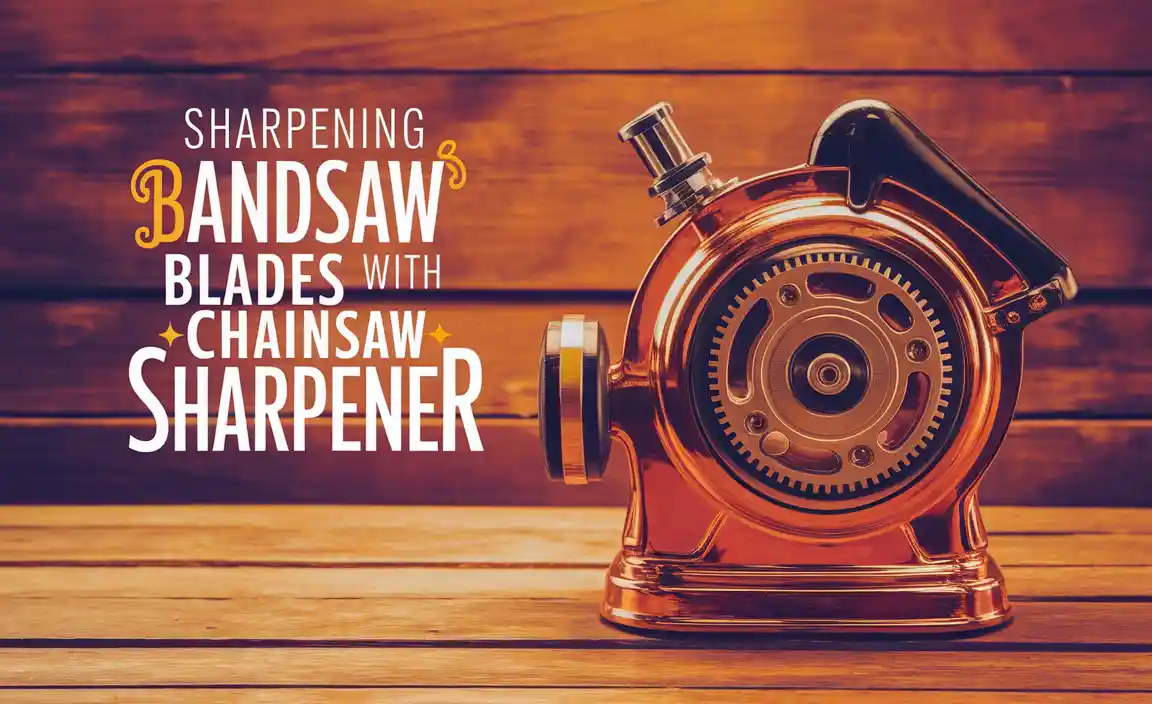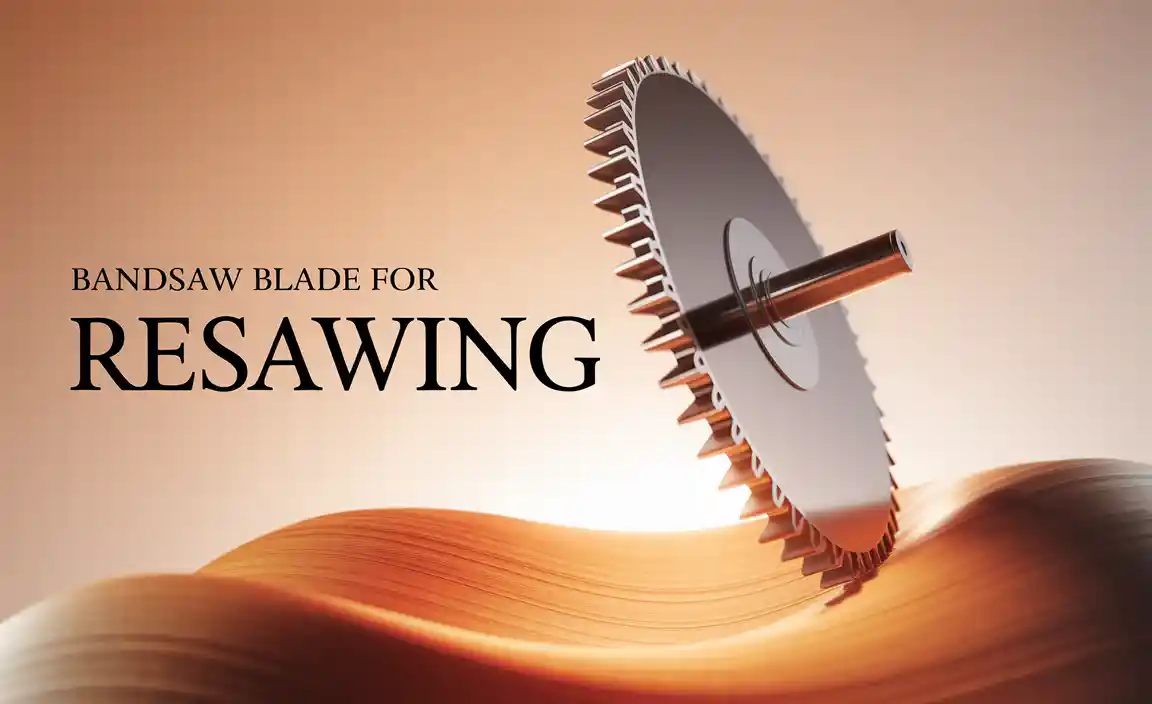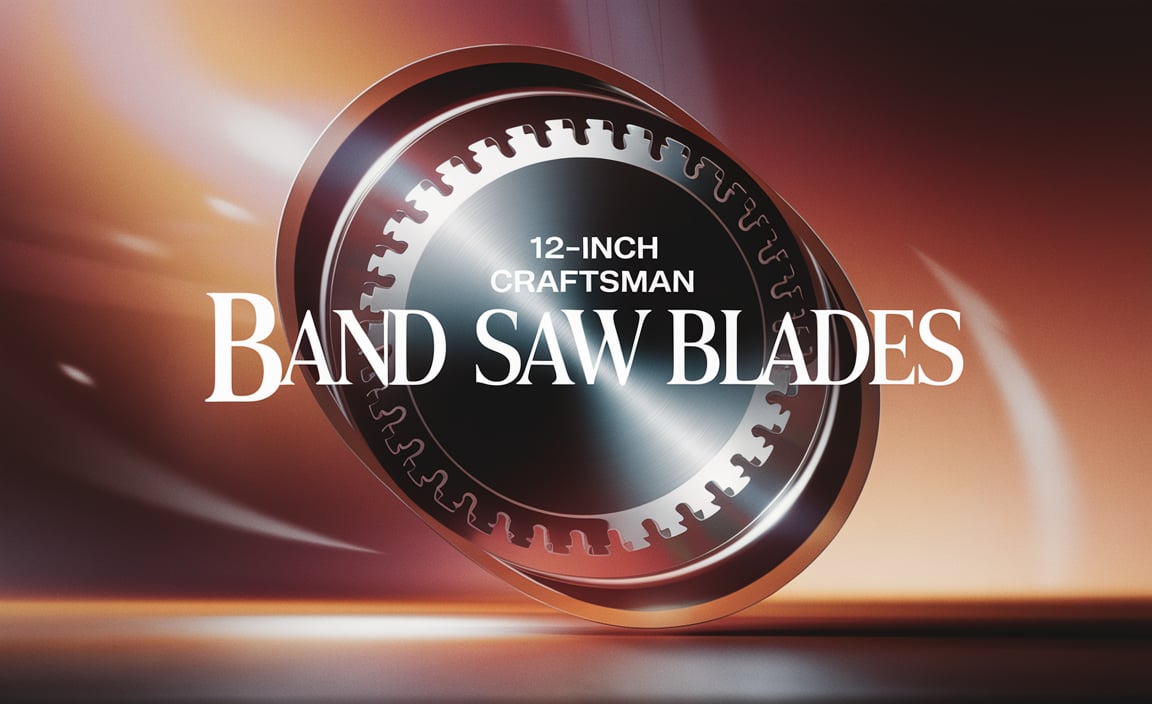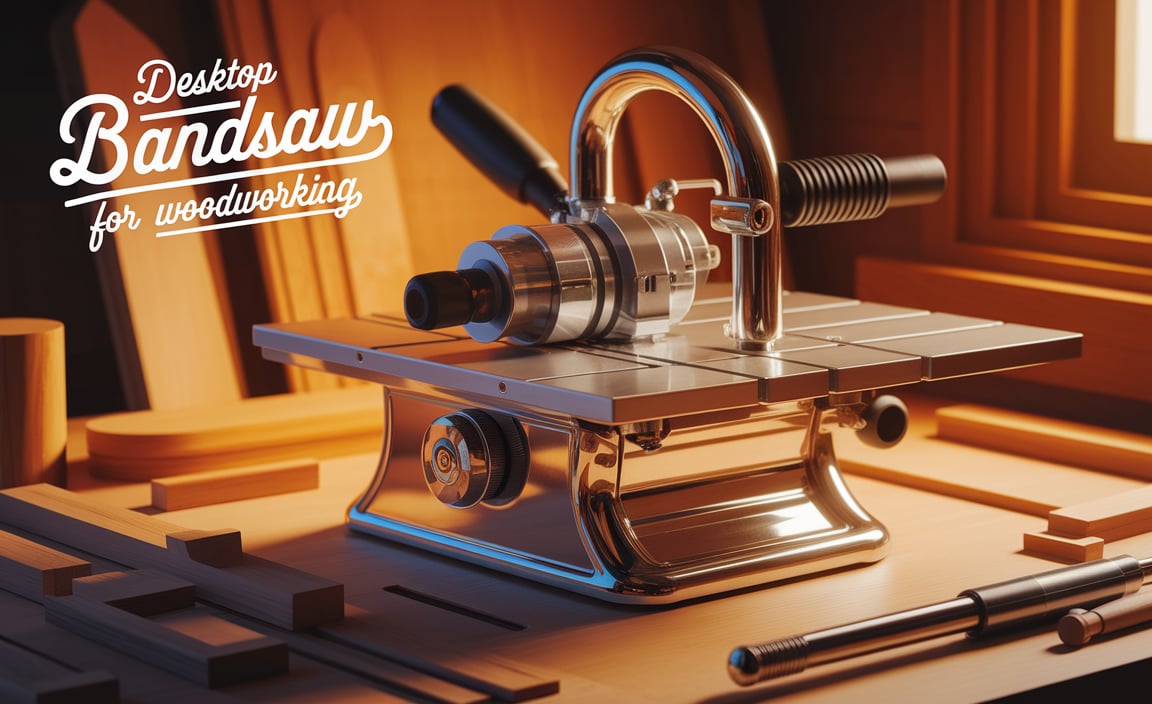Have you ever tried to cut wood with a dull bandsaw blade? It’s frustrating, isn’t it? A sharp blade makes all the difference. It helps you cut cleanly and quickly. But how do you keep your bandsaw blades sharp and ready for action?
In this article, we will explore simple ways to sharpen bandsaw blades. You don’t need to be a woodworking expert to do this. With a few tips and tricks, you can make your blades last longer and work better. Just think about it: a well-maintained blade can save you time and effort.
Here’s a fun fact. A sharp blade cuts through wood much smoother. It even helps reduce the chance of kickback. So, keeping your blades sharp is not just smart; it’s safer too!
Are you ready to learn how to sharpen bandsaw blades? Let’s dive into some easy steps that can help you become a master at blade care!
Table of Contents
How To Sharpen Bandsaw Blades: A Comprehensive Guide
Sharpening bandsaw blades keeps your cuts smooth and precise. Dull blades can cause frustration and waste material. Did you know that a sharp blade lasts longer and makes cleaner cuts? Start by inspecting the teeth for damage. Use a sharpening tool or file, and gently work the edges. Regular maintenance ensures better performance. Imagine cutting through wood like butter! Learn the simple steps to keep your bandsaw in top shape and enjoy woodworking even more.
Understanding Bandsaw Blades
Types of bandsaw blades and their applications. Importance of sharpening for blade longevity and efficiency.
Bandsaw blades come in different types, each serving a unique purpose. For example, regular tooth blades are great for general cutting. Skip tooth blades cut faster through soft materials. Meanwhile, hook tooth blades work well with thick woods. Sharpening these blades is crucial. It helps them last longer and cuts better. A sharp blade can improve precision and reduce waste, making your work easier and more fun.
What are the types of bandsaw blades?
Types of bandsaw blades include:
- Regular Tooth
- Skip Tooth
- Hook Tooth
Signs Your Bandsaw Blade Needs Sharpening
Typical indicators of dull blades. Consequences of using dull bandsaw blades.
Using a dull bandsaw blade can cause many problems. You’ll notice some typical signs. First, the cuts may appear rough. Second, your material might burn during cutting. Third, you will need to apply extra pressure to make a cut. These issues show that it’s time to sharpen your blade. Using a dull blade can lead to:
- Poor cutting quality
- Increased waste
- Longer work times
- More accidents
Sharpening blades regularly keeps your work smooth and safe!
How can I tell if my bandsaw blade is dull?
Look for rough cuts, burn marks on your material, or when it feels hard to push through. If you notice any of these, it’s time for a sharpen!
Step-by-Step Guide to Sharpening Bandsaw Blades
Detailed process for manual sharpening. Instructions for using power sharpeners.
Sharpening bandsaw blades can make your cuts smoother. First, let’s look at how to do it manually. Hold the blade tightly. Use a round file and apply even strokes to each tooth. Make sure to keep the angle the same for all teeth. Now, for power sharpeners, simply guide the blade while the sharpener does the work. Follow the instructions for your specific model for best results. This way, your bandsaw will be as good as new!
How do you sharpen a bandsaw blade?
To sharpen a bandsaw blade, use a file for manual sharpening or a power sharpener for faster results. Remember to keep a steady hand and follow the blade’s angle for smooth cuts.
Steps for Manual Sharpening:
- Secure the blade.
- Use a round file.
- Maintain an even angle.
Using a Power Sharpener:
- Read the manual first.
- Guide the blade carefully.
- Check the sharpness frequently.
Common Mistakes to Avoid
Errors during the sharpening process. Missteps in maintaining blade tension and alignment.
Avoiding mistakes will help you sharpen bandsaw blades better. Here are some common errors:
- Not checking the sharpness often enough can lead to dull blades.
- Ignoring the right blade tension can cause uneven cuts.
- Failing to align the blade correctly will harm your projects.
Remember, keeping the blade tight and straight supports smooth cuts. Small details can make a big difference!
What mistakes should I look out for while sharpening bandsaw blades?
Always check sharpness and tension. Neglecting these can ruin your cutting experience. Maintaining proper alignment is key for accurate cuts.
Maintenance Tips for Bandsaw Blades
Cleaning and storing blades properly. Regular inspection and preventive care.
To keep bandsaw blades in great shape, you need to clean and store them correctly. Brush off any dust and sap after each use. Store them flat to avoid bending. Check them regularly for signs of wear, like dull edges or cracks. Think of this as giving your blades a spa day! Regular inspection can help avoid disasters later on. Remember, prevention is better than a costly repair. It’s better to care for these blades now than to cry over broken ones later!
| Tip | Description |
|---|---|
| Cleaning | Brush off dust and sap after each use. |
| Storage | Store blades flat to prevent bending. |
| Inspection | Check for dull edges or cracks regularly. |
When to Replace Bandsaw Blades
Signs that indicate a blade is beyond repair. Factors influencing the lifespan of bandsaw blades.
Keeping an eye on your bandsaw blades is crucial. Signs like dull cuts, excessive burning, and unusual sounds are clear hints it’s time for a change. If your blade starts bending or has missing teeth, it’s waving goodbye! The lifespan can shift based on usage and the materials you’re cutting. For example, cutting hard wood may wear it out faster than a leisurely slice through soft pine. Here’s a quick guide:
| Sign of Damage | What to Notice |
|---|---|
| Dull Cuts | Leaves rough edges! |
| Burning Smell | Definitely not a BBQ! |
| Bent Blades | Time to straighten things out! |
| Missing Teeth | A blade with a gap is a sad blade! |
Stay sharp, and your bandsaw will thank you!
Conclusion
In conclusion, sharpening bandsaw blades is easy and important. You can use a file, a sharpener, or even a bench grinder. Make sure to follow safety guidelines while you work. By keeping your blades sharp, you ensure better cuts and longer blade life. So, gather your tools and try sharpening your bandsaw blades today! For more tips, check out additional resources.
FAQs
What Are The Different Techniques And Tools Used For Sharpening Bandsaw Blades?
To sharpen bandsaw blades, we can use a few different tools and techniques. One common tool is a specialized sharpener that grinds the teeth. You can also use a file to sharpen each tooth by hand. Another option is using a grinding wheel that spins fast to quickly sharpen the blade. Keeping the blade sharp helps it cut better and last longer!
How Can You Determine When A Bandsaw Blade Needs Sharpening?
You can tell a bandsaw blade needs sharpening if it starts to cut slowly or leaves rough edges on the wood. If you hear strange noises or feel the saw pulling to one side, that’s a sign too. You might notice more dust instead of nice, clean cuts. If it feels hard to push the wood through, it’s time to sharpen the blade.
What Safety Precautions Should Be Taken While Sharpening Bandsaw Blades?
When you sharpen bandsaw blades, wear safety glasses to protect your eyes. Always unplug the saw before you start working. Keep your hands away from the blade while it’s moving. Use the right tools to avoid accidents. Finally, make sure your work area is clean and tidy.
How Frequently Should Bandsaw Blades Be Sharpened For Optimal Performance?
You should sharpen bandsaw blades when you notice they are cutting poorly. This could be every few hours of use or after several projects. Check the blade regularly to see if it is dull. Keeping it sharp helps make cleaner cuts and saves time. Taking care of your blades makes your work easier and more enjoyable!
Can Sharpening Bandsaw Blades At Home Be As Effective As Professional Sharpening Services?
Sharpening bandsaw blades at home can work well, but it might not be as good as a professional service. When you do it yourself, you need the right tools and practice. Sometimes, professionals have machines that make the blade super sharp. If you’re careful and take your time, you can do a good job at home too!






